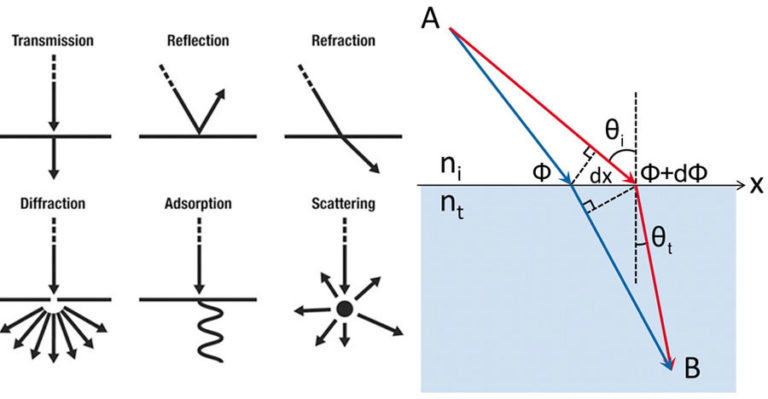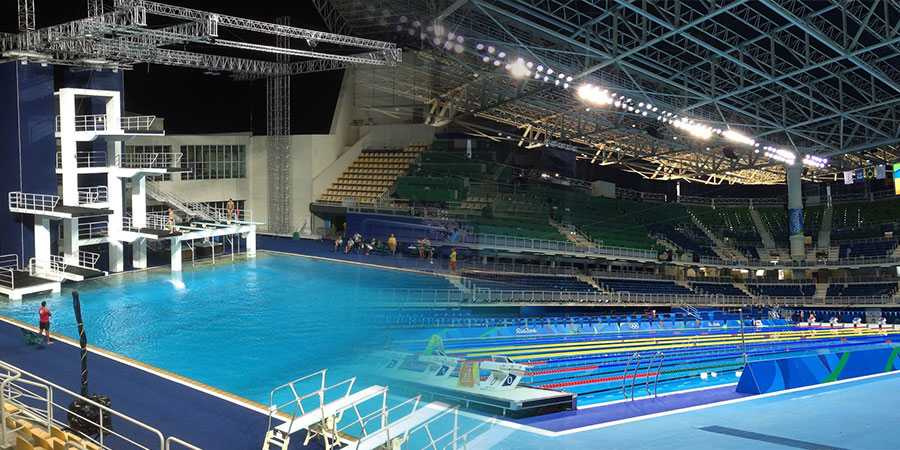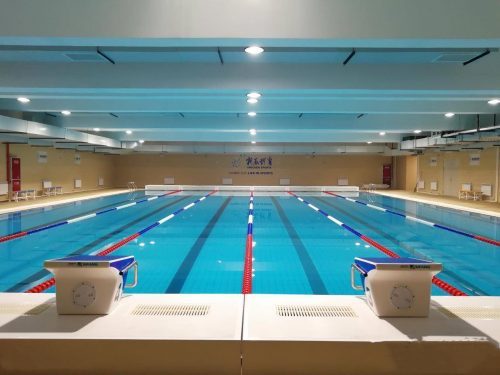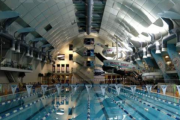Swimming Pool Stadium Lighting
There was no swimming event in the ancient Olympic Games, but swimming has always been mastered by human beings. In the struggle against nature, in order to survive, and sometimes for entertainment, humans gradually mastered swimming skills. Until 1896, the swimming event entered the first modern Olympic Games. From May 1, 1957, FINA regulations only recognize the world record set in a 50-meter standard swimming pool.
The international standard swimming pool is 50 meters long, at least 25 meters wide, and more than 2 meters deep. There are 8 lanes, each with a width of 2.5 meters. The outer lanes of the first and eighth lanes are 2.5 meters away from the pool wall.
Swimming Pool Camera Position Table
|
Seat |
Type | Position |
Application |
|
1 |
Large | The higher stands at the beginning and end | Main scene lens |
|
2 |
Large | The Lower stands at the beginning and end | Specific lens |
|
3 |
Miniature | Move back and forth on the 50-meter swimming pool platform | Low angle motion |
|
4 |
Large | 50 meters low starting point | 50-meter starting point, low-turn action |
|
5 |
Large | 50 meters high starting point | 50-meter starting point, mid-turn, main flip |
|
6 |
Wireless | Starting point and ending point on the shore of the swimming pool | Introduction, swimming pool exit and ceremony |
|
7 |
Portable | Turning on the shore of the swimming pool | Specific shots, ceremonies |
|
8 |
car mobile Mini camera | The bottom of the sixth lane of the swimming pool, moving back and forth within 2 meters | Underwater tracking camera |
|
9 |
Miniature elevated | 80-meter track above the central pool lane | High-altitude camera |
|
10 |
Large | Rear of the pool shore | Landscape footage, action decomposition |
|
11 |
Portable | At the corner of the pool bank on the side of the pool | Decomposition action |
|
12 |
Portable | Installed on a common tower | Stadium lens |
|
13 |
Miniature | Installed at the bottom of the pool 3 meters from the camera to the right of the starting and ending points | Back flip |
|
14 |
Miniature | Installed at the bottom of the swimming pool 4 meters from the camera to the left of the starting and ending points | Back flip |
|
15 |
Periscope camera | Installed on the swimming pool wall 12 meters from the entrance | Underwater photography range of 15 meters from the swimming lane sign |
|
16 |
Miniature | Installed at the entrance of lane 4 | Fourth entrance and flip, specific shots of swimmers |
|
17 |
Miniature | Installed at the entrance of lane 5 | Fifth entrance and flip, specific shots of swimmers |
|
18 |
Waterproof boom camera | Corner on the pool shore | Corner camera range and ceremony |
|
19 |
Large SSM camera | The center of the grandstand | Decomposition action |
|
20 |
Large SSM camera | center of Pool shore | Facing decomposition actions and rituals |
|
21 |
Large SSM camera | Athlete collection room | Leave the meeting room |
Swimming Pool Lighting Standards
Lighting standards for swimming, diving, water polo, and synchronized swimming venues
| Grade |
Use function |
Illuminance (lx) |
Illumination uniformity |
Light Source |
||||||||
| Eh | Evmin | Evmax | Uh | Uvmin | Uvmax | Ra | Tcp(K) | |||||
| U1 | U2 | U1 | U2 | U1 | U2 | |||||||
| I | Training and recreational activities | 200 | – | – | – | 0.3 | – | – | – | – | ≥65 | – |
| II | Amateur competition, professional training | 300 | _ | _ | 0.3 | 0.5 | _ | _ | _ | _ | ≥65 | ≥4000 |
| III | Professional competition | 500 | _ | _ | 0.4 | 0.6 | _ | _ | _ | _ | ≥65 | ≥4000 |
| IV | TV broadcast national and international competitions | – | 1000 | 750 | 0.5 | 0.7 | 0.4 | 0.6 | 0.3 | 0.5 | ≥80 | ≥4000 |
| V | TV broadcasts major, international competitions | – | 1400 | 1000 | 0.6 | 0.8 | 0.5 | 0.7 | 0.3 | 0.5 | ≥80 | ≥4000 |
| VI | HDTV broadcast major, international competition | – | 2000 | 1400 | 0.7 | 0.8 | 0.6 | 0.7 | 0.4 | 0.6 | ≥90 | ≥5500 |
| – | TV emergency | – | 750 | – | 0.5 | 0.7 | 0.3 | 0.5 | – | – | ≥80 |
≥4000 |
Remark:
1. Should avoid artificial light and natural light reflected by the water surface to cause glare to athletes, referees, cameras and spectators,
2. The reflectance of the walls and ceiling is not less than 0.4 and 0.6, respectively, and the reflectance of the bottom of the pool should not be less than 0.7,
3. Should ensure that the area around the swimming pool is 2 meters, and the 1 meter height area has sufficient illumination,
4. The values of V grade Ra and Tcp of outdoor venues should be the same as VI grade.
Vertical illuminance of swimming (maintenance value)
|
Shooting distance |
25m | 75m | 150m |
| Type A | 400lux | 560lux |
800lux |
Illuminance ratio and uniformity
Ehaverage : Evave = 0.5~2 (For reference plane)
Evmin : Evmax ≥0.4 (For reference plane)
Ehmin : Ehmax ≥0.5 (For reference plane)
Evmin : Evmax ≥0.3 (Four directions for each grid point)
Remarks:
1. Glare index UGR<50 for Outdoor only,
2. Main area (PA): 50m x 21m (8 Swim lanes), or 50m x 25m (10 Swim lanes), Safe area, 2 meters wide around the swimming pool.
3. Total Division (TA): 54m x 25m (or 29m).
4. There is a diving pool nearby, the distance between the two places should be 4.5 meters.
Layout
Indoor swimming and diving halls usually consider the maintenance of lamps and lanterns, and generally do not arrange lamps and lanterns above the water surface, unless there is a dedicated maintenance channel above the water surface. For venues that do not require TV broadcasting, the lamps are often scattered under the suspended ceiling, roof truss or on the wall beyond the surface of the water. For venues that require TV broadcasting, the lamps are generally arranged in a light strip arrangement, that is, above the pool banks on both sides. Longitudinal horse tracks, horizontal horse tracks are arranged above the pool banks at both ends. In addition, it is necessary to set an appropriate amount of lamps under the diving platform and springboard to eliminate the shadow formed by the diving platform and springboard, and focus on the diving sports warm-up pool.
It should be emphasized that the diving sport should not arrange lamps above the diving pool, otherwise a mirror image of the lights will appear in the water, causing light interference to the athletes and affecting their judgment and performance.
In addition, due to the unique optical characteristics of the water medium, the glare control of swimming pool venue lighting is more difficult than other types of venues, and it is also particularly important.
a) Control the reflected glare of the water surface by controlling the projection angle of the lamp. Generally speaking, the projection angle of lamps in the gymnasium is not greater than 60°, and the projection angle of lamps in the swimming pool is not greater than 55°, preferably not greater than 50°. The greater the angle of incidence of light, the more light reflected from the water.
b) Glare control measures for diving athletes. For diving athletes, the venue range includes 2 meters from the diving platform and 5 meters from the diving board to the water surface, which is the entire trajectory space of the diving athlete. In this space, the venue lights are not allowed to have any uncomfortable glare to the athletes.
c) Strictly control the glare to the camera. That is, the light on the surface of the still water must not be reflected into the field of view of the main camera, and the light emitted by the lamp should not be directed at the fixed camera. It is more ideal if it does not directly illuminate the 50° sector area centered on the fixed camera.
d) Strictly control the glare caused by the mirror image of lamps in water. For swimming and diving halls that require TV broadcasting, the competition hall has a large space. The venue lighting fixtures generally use metal halide lamps above 400W. The mirror brightness of these lamps in the water is very high. If they appear in athletes, referees, and camera audiences Inside, all will produce glare, affecting the quality of the game, watching the game and broadcasting.




